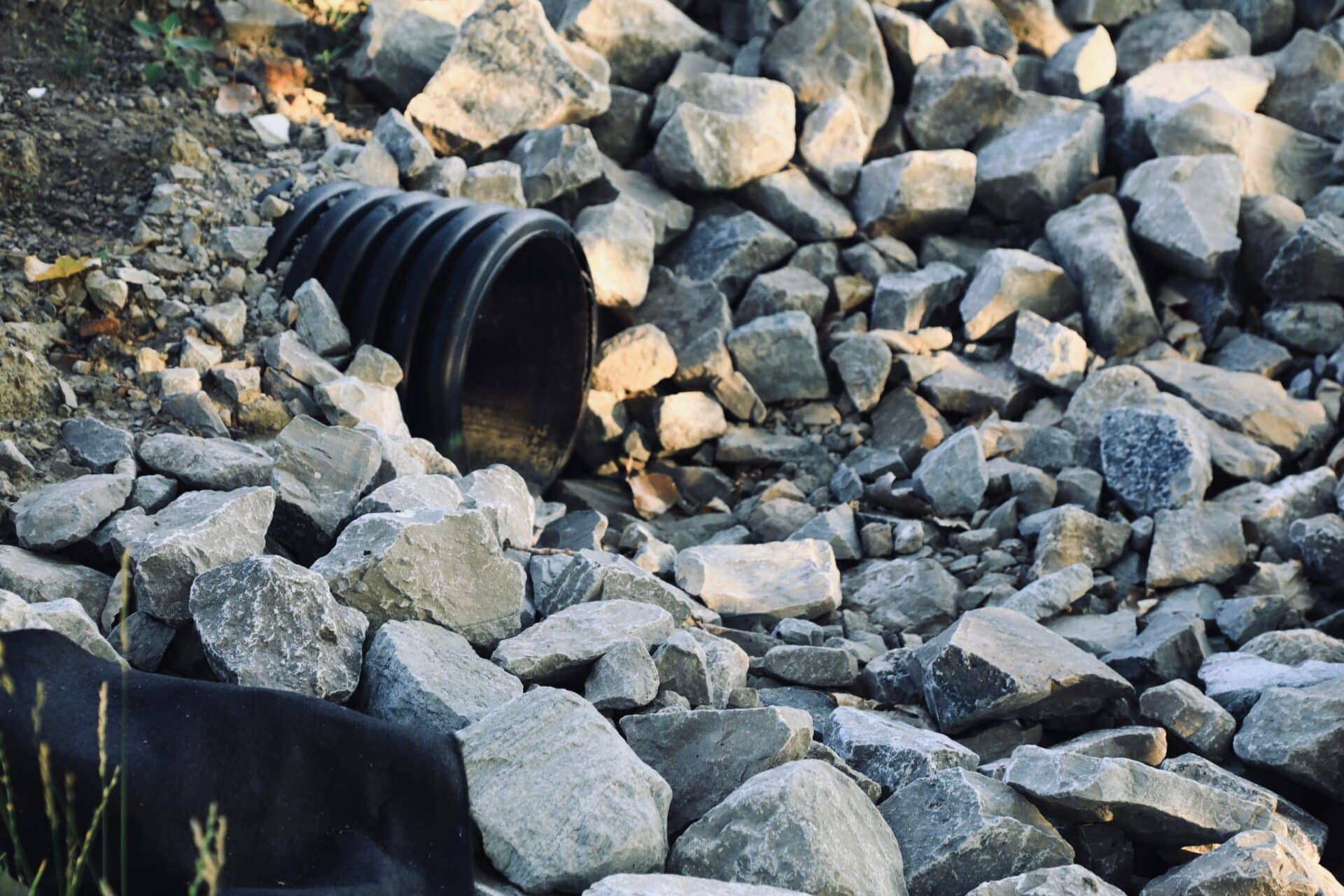In Alberta, summer storms often bring heavy rains that leave roads flooded. As the need for resilient infrastructure grows, stormwater management becomes essential in controlling where that water goes. But did you know that erosion and sediment control measures are a crucial part of that process? In this blog, we’ll explore what stormwater management involves, how erosion and sediment control measures can enhance it, and tactics you can apply to new developments.
What is Stormwater Management?
Let’s start with the basics – what exactly counts as stormwater? In Alberta, stormwater is any form of water from rainstorms, runoff, or melting snow that enters storm drains or drainage ditches and enters nearby rivers or streams. A challenge that cities and municipalities are facing is the increasing risk of flooding existing infrastructure can’t handle the amount of heavy rainfall, resulting in flooded streets, basements or communities. The Stormwater Action Plan was created to help support new urban developments, cities, and municipalities to design resilient stormwater infrastrucrure to reduce the risk of flooding, stream erosion and pollution in water bodies.
So where does erosion and sediment control come in? Stormwater management plans must include an assessment of the current infrastructure and determine what steps must be taken to its capacity for water volume. As part of the assessment, erosion and sediment control measures can be used to help design and construct wet or dry ponds or a constructed wetland to contain the water until the sediments have settled and the final water enters the river. As a note, a constructed wetland is man-made, with a shallow design and increased vegetation with native plants, grasses and shrubs chosen for the specific growing region. Both a stormwater management plan and erosion and sediment control plan include planning, design, construction and measurement phases.

5 Ways Erosion and Sediment Control Can Support Stormwater Management
When planning for effective stormwater management, erosion and sediment control measures play a crucial role. Not only do they help protect the environment, but they also improve the efficiency of your stormwater systems, reducing the risks of flooding, pollution, and costly maintenance.
1. Keeping Pollutants Out of Waterways
Erosion and sediment control measures act as a first line of defense in keeping pollutants out of natural waterways. During storms or snowmelt, loose soil, debris, and other pollutants can easily wash into rivers, lakes, and wetlands. These control measures capture and filter out sediment before it can enter the water system, improving water quality and protecting aquatic ecosystems.
2. Reducing Sediment Buildup in Stormwater Systems
One of the biggest challenges in stormwater management is keeping storm drains, pipes, and other infrastructure free of sediment buildup. Without proper erosion control, stormwater can carry large amounts of sediment into drainage systems, causing blockages, flooding, and increased maintenance costs. By implementing sediment controls at the source, you reduce the risk of these problems and help your stormwater systems work more efficiently.
3. Preserving Natural Drainage Patterns
Erosion control measures, such as stabilizing vegetation or retaining walls, help preserve the natural landscape, which is essential for maintaining natural drainage patterns. This keeps stormwater flowing properly and helps reduce surface runoff, allowing more water to absorb into the ground and preventing downstream erosion.
4. Slowing Runoff and Preventing Damage
When stormwater flows too quickly, it can cause serious erosion and damage to the surrounding landscape. Erosion control practices, such as silt fences, erosion control blankets or rock barriers, help slow down the velocity of runoff, giving water more time to infiltrate the ground. This not only reduces the risk of flooding but also helps protect the soil and reduce the potential for future erosion.
5. Promoting Long-Term Sustainability
Incorporating erosion and sediment control into your stormwater management planning is essential for long-term sustainability. By preventing the degradation of both natural landscapes and stormwater infrastructure, you create a more resilient system that can better handle future storms and environmental changes.
By addressing erosion and sediment control early in your stormwater management plan, you can protect your infrastructure, prevent pollution, and promote a healthier, more sustainable environment for the long term.
What Erosion and Sediment Control Measures Can Minimize Erosion During Construction?
Keeping erosion under control during construction is key to protecting your site and the environment. Here are some simple ways to tackle it:
- Scope Out the Area First: Check out the natural flow of water and existing vegetation before starting construction. Preserving what’s there can help slow down erosion, and knowing the water flow will guide your plans.
- Clear Land in Phases: Don’t clear everything at once! By working in smaller sections, you leave less exposed soil and reduce the chance of erosion, especially during storms.
- Have a Stormwater Plan: Set up a stormwater plan that includes ponds, trenches, or filter strips to keep water under control and stop it from rushing across bare soil. This helps prevent erosion and keeps your project on track.
- Use Temporary Water Flow Controls: Temporary fixes like culverts and sediment barriers can keep water moving in a controlled way while stopping erosion. They’re especially useful in areas with streams.
- Erosion Control Products: Install silt fences, mulch, or erosion control blankets to hold soil in place when it rains. These quick measures keep runoff from dragging soil away.
By taking these steps, you can minimize erosion and keep your site in good shape. Need help? MIDA’s erosion and sediment control solutions can keep your project safe and compliant. Reach out to our team today for more info!
Choose MIDA Contracting for Erosion and Sediment Control
Are you looking for erosion and sediment control services for new developments in the Edmonton area? We’ve got you covered! When it comes to delivering for your customers and keeping up with project timelines, we can help with everything you need for construction maintenance services. From vegetation recommendations to support building your next erosion and sediment control plan, our team is here to support your next development from initial planning to installation and monitoring. Request a quote today to get started with MIDA Contracting!

